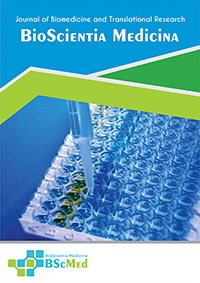Main Article Content
Abstract
Background: Leprosy, caused by Mycobacterium leprae, persists as a global health issue where the primary challenges are not merely microbial but are deeply rooted in delayed diagnosis and poor treatment adherence. These delays, often driven by profound social stigma, lead to progressive, irreversible disability and sustain community transmission. Erythema Nodosum Leprosum (ENL), an acute immunological complication, further devastates patients' quality of life and complicates management.
Case presentation: A 53-year-old Indonesian farmer presented with a 15-year history of untreated leprosy, a journey of neglect initiated by fear of treatment side effects and community ostracism. Clinical examination revealed advanced borderline lepromatous (BL) leprosy with diffuse skin infiltration, multiple anesthetic plaques, and thickened, tender peripheral nerves. He had established WHO Grade 1 disability, characterized by significant sensory loss in his hands and feet and early intrinsic muscle atrophy. A slit-skin smear confirmed a bacteriological index of +3 with a morphological index of 5%, indicating a high load of viable bacilli. Histopathology confirmed BL leprosy with a concurrent mild ENL reaction. A comprehensive, patient-centered management plan was initiated, including a 12-month course of multidrug therapy (MDT-MB), adjunctive care, and intensive counseling.
Conclusion: This case powerfully illustrates the "shadow effect" of leprosy—how years of untreated disease, fueled by psychosocial barriers, culminate in a complex nexus of advanced infection, immunological reaction, and permanent neurological impairment. The patient's successful re-engagement with the health system underscores that eradicating the burden of leprosy requires a paradigm shift from a purely pharmacological approach to a deeply humanistic one. Effective control hinges on building compassionate health systems that actively dismantle stigma, empower patients with knowledge, and deliver holistic, multidisciplinary care to prevent the profound human cost of neglect.
Keywords
Article Details
As our aim is to disseminate original research article, hence the publishing right is a necessary one. The publishing right is needed in order to reach the agreement between the author and publisher. As the journal is fully open access, the authors will sign an exclusive license agreement.
The authors have the right to:
- Share their article in the same ways permitted to third parties under the relevant user license.
- Retain copyright, patent, trademark and other intellectual property rights including research data.
- Proper attribution and credit for the published work.
For the open access article, the publisher is granted to the following right.
- The non-exclusive right to publish the article and grant right to others.
- For the published article, the publisher applied for the Creative Commons Attribution-NonCommercial-ShareAlike 4.0 International License.





